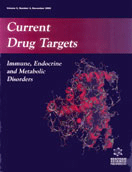Abstract
Structure-modifying osteoarthritis (OA) drugs are agents that reverse, retard, or stabilize the pathology of OA, thereby providing symptomatic relief in the long-term treatment. The objective of this review is to evaluate the literature on chondroitin sulfate (CS) with respect to the pathobiology of OA to ascertain whether this agent should be classified as a symptomatic slow-acting drug (SYSADOA), a compound that has a slow onset of action and improve OA symptoms after a couple of weeks. CS exhibits a wide range of biological activities and from a pharmacological point of view it produces a slow but gradual decrease of the clinical symptoms of OA and these benefits last for a long period after the end of treatment. Many literature data show that CS could have an anti-inflammatory activity and a chondroprotective action by modifying the structure of cartilage. These properties are also related to the oral adsorption of this molecule as high-molecular mass compounds having clusters of sulfate groups and high charge density capable of exert their chondroprotective activity in vivo.
Keywords: chondroitin sulfate, glycosaminoglycans, oral route, osteoarthritis



















